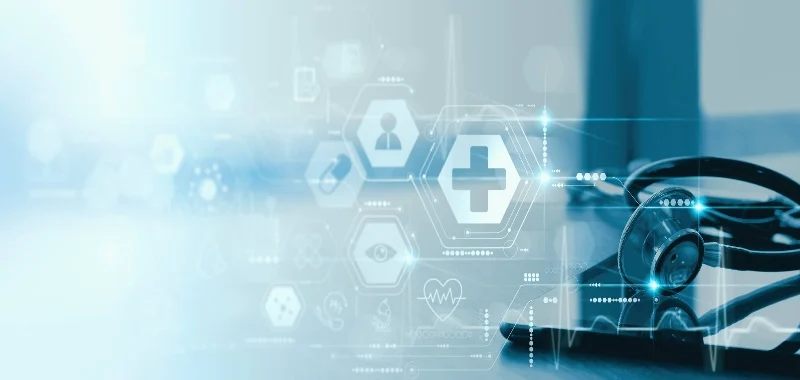The healthcare landscape is evolving at an unprecedented pace, fueled by groundbreaking technologies that promise to transform patient care, streamline operations, and improve outcomes. As we move toward 2025, several key trends are emerging that will shape the future of medical technology. Staying ahead of these innovations is essential for healthcare professionals committed to delivering the best care possible. Here are eight trends to keep an eye on as they redefine the medical field in the coming years.
1. The Rise of AI in Healthcare
Artificial Intelligence (AI) is quickly becoming a cornerstone of modern healthcare. By 2025, AI’s role is expected to expand, particularly in diagnostics, patient care, and administrative tasks. AI systems can process vast amounts of data at lightning speed, enabling doctors to make quicker and more accurate diagnoses. For example, AI algorithms are already capable of analyzing medical imaging to detect conditions like cancer at early stages, vastly improving patient outcomes.
Beyond diagnosis, AI is making waves in the operational side of healthcare. From managing patient records to handling scheduling and billing, AI reduces human error and increases workflow efficiency. This not only frees up more time for doctors to focus on patient care but also paves the way for more personalized treatment plans tailored to individual patient needs, making healthcare both smarter and more patient-centric.
2. Hyper-Personalized Medicine
The future of medicine is personal—and it’s getting more precise every day. Hyper-personalized medicine uses data from a patient’s genetics, lifestyle, and environment to create custom treatment plans. Unlike the traditional “one-size-fits-all” approach, this trend offers treatments that are uniquely suited to the individual. Genetic testing is a key component of this movement, allowing doctors to prescribe medications that match the patient’s genetic makeup, minimizing side effects and optimizing efficacy.
Emerging technologies like CRISPR, which allows for gene editing, hold incredible promise for treating genetic disorders previously thought to be untreatable. By 2025, these tools could become more common in clinical settings, providing patients with the potential for groundbreaking, individualized treatments. Wearable devices that track real-time health data are also becoming more advanced, providing valuable insights into a patient’s ongoing condition and enabling healthcare professionals to monitor and adjust treatment plans proactively.
3. Data-Driven Healthcare Transformation
Data is the lifeblood of modern healthcare, and by 2025, its impact will only grow. Healthcare organizations are increasingly leveraging data analytics to make more informed decisions, improve patient outcomes, and optimize hospital operations. From managing patient flow to predicting admission rates and staffing needs, data-driven decision-making will lead to more efficient, cost-effective healthcare systems.
Perhaps most exciting is the rise of predictive analytics. By analyzing trends in patient data, healthcare professionals can identify potential health issues before they become serious, allowing for early intervention. This shift from reactive to preventative care could be one of the most significant transformations in healthcare, ultimately improving long-term patient health and reducing the burden on healthcare systems.
4. Blood Testing Revolutionized
Blood testing is a staple of diagnostics, but it’s often invasive and time-consuming. Innovations in blood testing technologies are set to change this by 2025. New microfluidic technologies can perform multiple tests with just a drop of blood, making testing quicker, more accurate, and less uncomfortable for patients. This efficiency will not only speed up diagnosis but also enhance patient experiences, particularly for those who need frequent testing.
Point-of-care testing is another trend to watch. These mobile devices, which allow testing outside traditional labs, are becoming increasingly sophisticated. This is particularly beneficial for patients in remote areas who may not have easy access to healthcare facilities, ensuring that vital tests can be done on-site, providing timely results and reducing the need for long wait times.
5. Virtual Healthcare Assistants
Virtual healthcare assistants powered by AI are already making waves, and by 2025, they will become even more integral to patient care. These digital assistants can manage a range of tasks—from scheduling appointments to answering patient queries and even providing medication reminders. As their capabilities expand, they will be able to offer more complex advice, empowering patients to manage their health more effectively.
For healthcare providers, these virtual assistants help reduce the administrative burden, enabling them to focus more on direct patient care. By facilitating continuous engagement with patients, these assistants could be particularly beneficial for managing chronic conditions, providing support between visits, and improving overall patient outcomes.
6. The Evolution of Telemedicine
Telemedicine has surged in popularity over the past few years, and it is poised to become a permanent feature of healthcare by 2025. The pandemic showed just how valuable telemedicine can be in providing convenient, accessible care to patients. Virtual consultations are expected to become the norm, especially for routine checkups, follow-up appointments, and mental health support.
Telemedicine also makes specialized care more accessible. Patients in rural or underserved areas can consult with experts without needing to travel long distances. This not only improves patient access to high-quality care but also reduces the strain on hospitals and clinics by allowing healthcare providers to see more patients remotely.
7. Wearable Technology and IoT Integration
Wearable technology, such as fitness trackers and smartwatches, is already helping individuals monitor their health in real-time, and by 2025, these devices will become even more sophisticated. These gadgets, combined with the Internet of Things (IoT), will provide healthcare providers with continuous streams of patient data, allowing for better-informed decision-making.
Wearables can monitor various health metrics like heart rate, activity levels, and sleep patterns, providing real-time insights into a patient’s condition. This connectivity between devices and healthcare systems will enable earlier interventions and more personalized treatment plans, particularly for chronic conditions like diabetes or hypertension.
8. The Power of 3D Printing in Healthcare
3D printing technology is transforming the way medical professionals approach everything from prosthetics to surgical planning. By 2025, the use of 3D printing will be even more widespread in healthcare. One of the most promising applications is the creation of patient-specific implants. Custom implants made with 3D printing technology are better suited to individual patients, reducing the risk of complications and improving recovery times.
3D-printed organ models are also revolutionizing surgical preparation. Surgeons can now practice complex procedures on 3D-printed models before operating on actual patients, enhancing their precision and reducing the risk of errors. As the technology improves, the potential for 3D printing to advance personalized medicine and surgical outcomes is immense.
Conclusion
The next few years promise to bring significant changes to the healthcare sector, driven by technological innovations that will improve patient care, streamline processes, and make medical services more accessible. From AI and hyper-personalized medicine to wearable devices and telemedicine, these trends are reshaping how we approach healthcare delivery. As 2025 approaches, healthcare professionals who stay informed about these trends will be well-positioned to provide the best possible care to their patients, ensuring that the healthcare system of tomorrow is more efficient, effective, and patient-centered than ever before.



